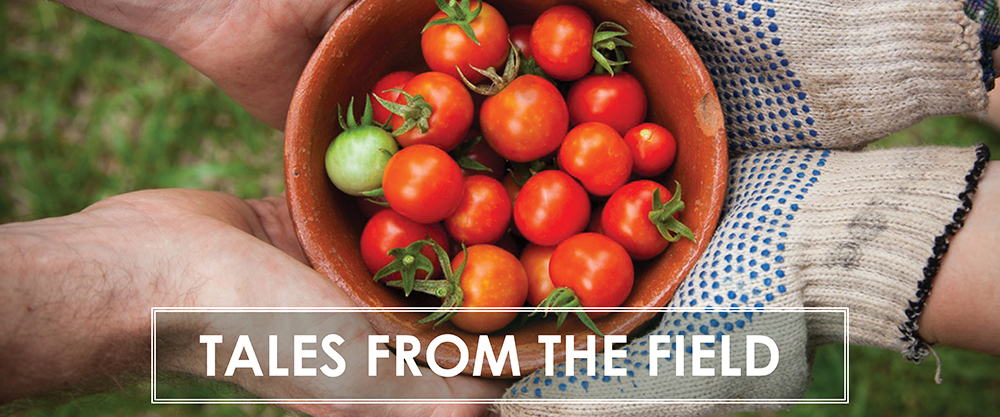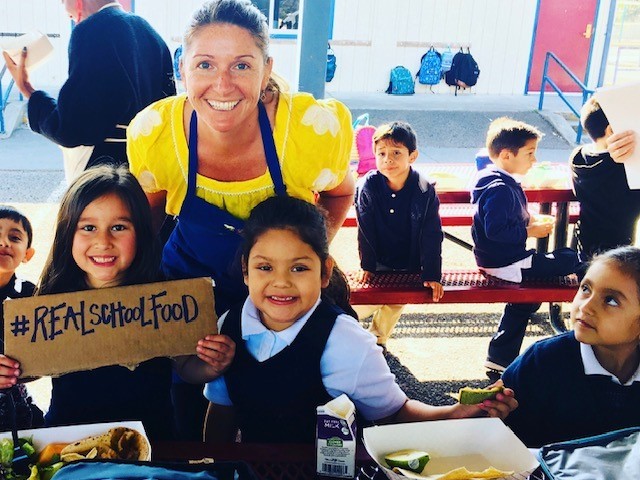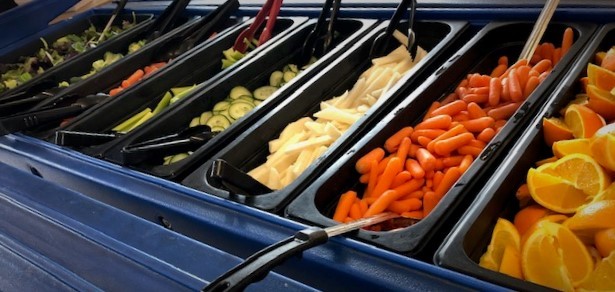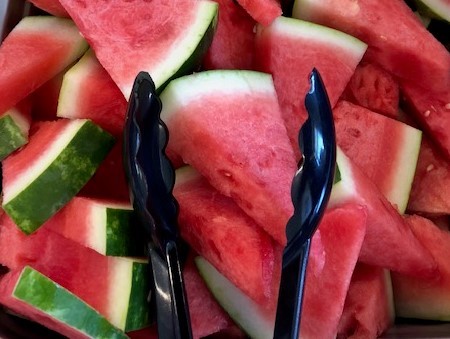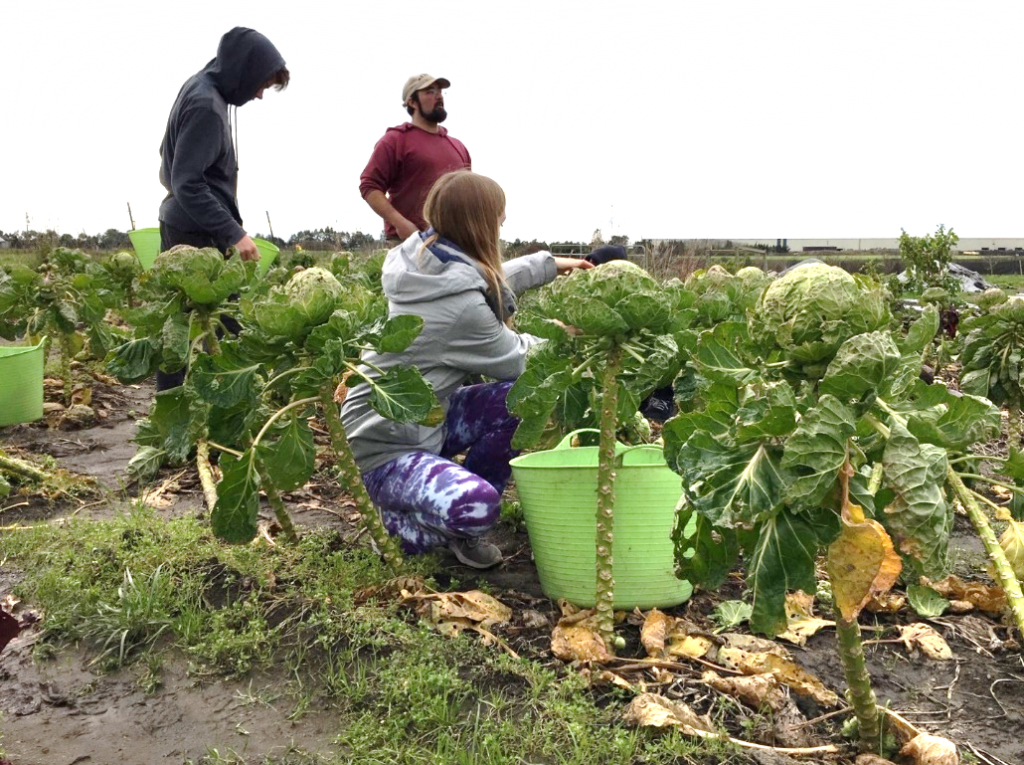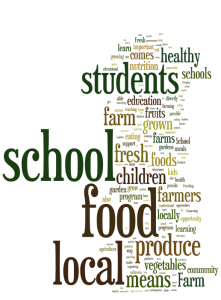“We are encouraging curiosity about food in students and building their confidence to take the “risk” of trying fruits and veggies that are foreign to them.” — Erin Derden-Little, Farm to School Coordinator for Humboldt County Office of Education
The Humboldt County Office of Education (HCOE) provides collaboration, management and support to the 32 school districts within Humboldt County, one of the largest and most rural counties in the state of California. There are approximately 18,500 students enrolled in Humboldt County schools, over 55% of whom qualify for free and reduced-price meals. HCOE Nutrition Programs & Services works to provide teachers, school food service staff, students, parents and community members with the tools and resources to support Humboldt County students in making lifelong healthy choices. One of the most successful ways HCOE is working to support students’ healthy lifestyles is through its robust farm to school program.
HCOE has a long track record of supporting farm to school. When Farm to School Coordinator Erin Derden-Little joined HCOE in 2016, a team of women had already been carrying out Harvest of the Month and other nutrition education activities for nearly 20 years. The program’s longest standing activity, Harvest of the Month, offers a powerful framework that reaches students in every part of the school day. Each month, HCOE delivers a ready-to-go curriculum and materials to over 200 K-5th grade classrooms, 26 after school programs and 18 pre-schools and playgroups – making it possible for over 4,800 children to try a featured produce item each month. Derden-Little said the program makes an effort to source 70% of produce from local farmers and has featured a wide variety of specialty crops including hakurei salad turnips, leeks, persimmons and kohlrabi. For each local produce item featured, HCOE creates a short video about the farm and produce item; these videos are shown in the classroom and have become a favorite of students and teachers.
By connecting school food service with Humboldt County farmers, HCOE is also helping schools source local produce for their meal programs and has assisted districts with following local procurement guidelines and developing bid documentation. Derden-Little explained that local sourcing is a challenge for HCOE’s smaller, spread-out districts because it’s not feasible for farmers to deliver small volumes over a wide geographic area and there are no other distribution options for schools to source local produce. To overcome this barrier, Derden-Little said HCOE has begun ordering extra quantities of local produce for interested school districts as part of their regular Harvest of the Month program. HCOE pays the farmer for the entire order, then uses an inter-district transfer process to collect payment; the produce is then distributed to districts with their regular Harvest of the Month deliveries.
In addition to the classroom and the cafeteria, Derden-Little said after-school programs have also been an area of focus for HCOE. Currently, 26 participating after-school programs receive a Harvest of the Month snack recipe at the beginning of the month and a more extensive recipe near the end of the month. After-school leaders work with the kids to create the recipe, then parents get to sample the finished product at pick-up time. To further support healthy eating at home, each month six to seven after-school programs also distribute bags of ingredients and recipe cards to 20 families as part of HCOE’s Family Meal Market program. That means between 120 and 140 families are receiving fresh produce and recipes from HCOE each month. Derden-Little explained the Family Meal Market program is a way for HCOE to help low-income and vulnerable families as they reach the end of their paychecks late in the month. The program has been a success, and Derden-Little said participating families have reported purchasing ingredients on their own to make the recipes again.
Derden-Little said one of the greatest impacts of HCOE’s efforts is that students are becoming less afraid of trying new foods, especially healthy foods. HCOE regularly collects feedback from Harvest of the Month teachers; one teacher noted, “Every time we try a new food at least one student who didn’t think they were going to like it finds they do. Families have shared with me that their kids come home asking them to buy certain produce, so they are helping their families make healthy choices!” By serving flavorful and nutrient-dense produce and building the connection to farmers, Derden-Little said HCOE is creating a positive and fun experience for students and changing the culture around healthy eating.
Check out HCOE’s Harvest of the Month videos on their Vimeo channel.
– CDFA Farm to Fork Staff
This article is part of a series highlighting organizations that are successfully promoting specialty crops in schools. Made possible by Specialty Crop Block Grant funding, these success stories aim to inspire similar efforts, ultimately increasing student access to, knowledge of, and demand for California specialty crops.
